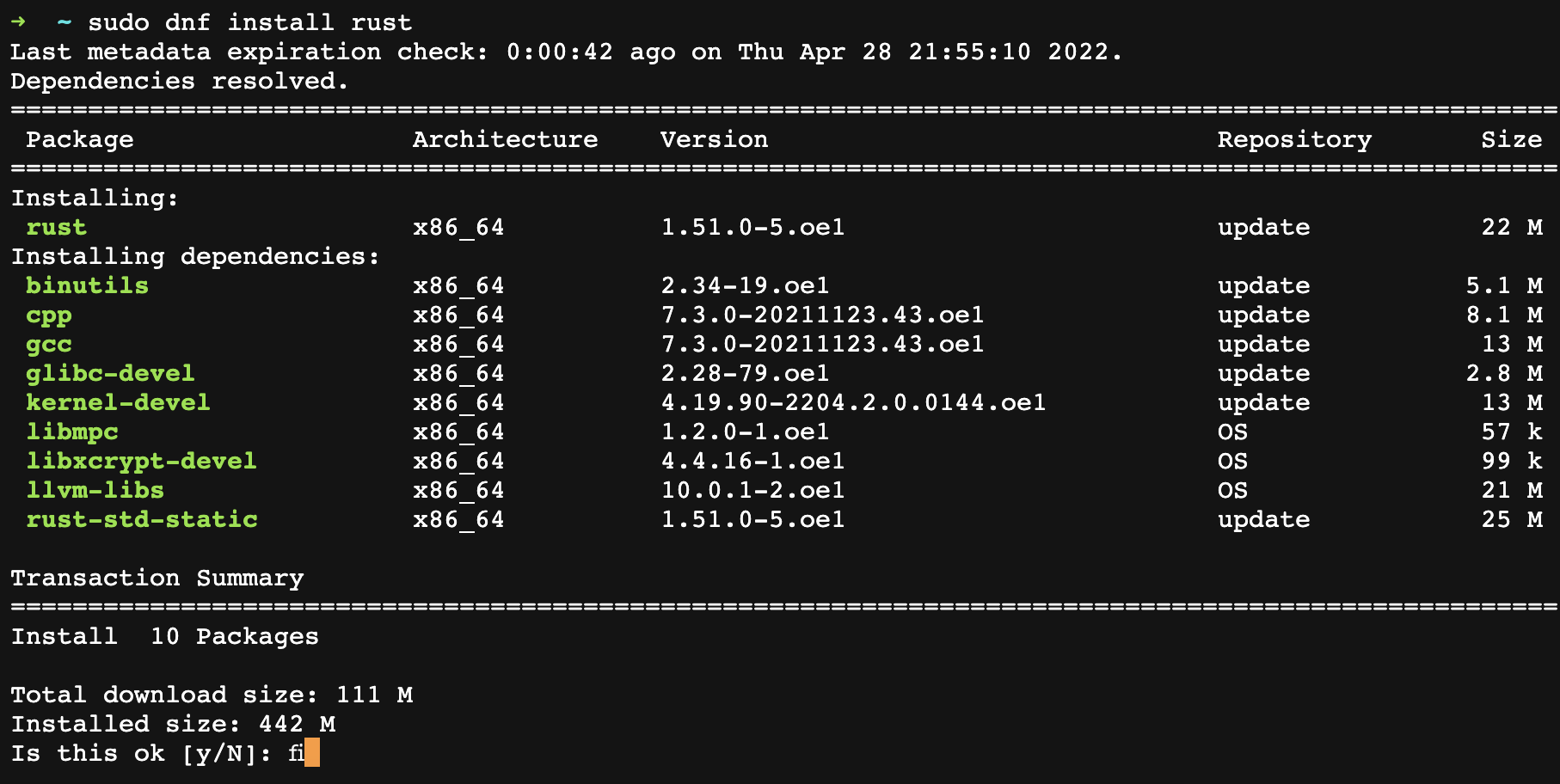如果你是一个程序员,你会知道,rpm, yum, dnf这三个进程是否运行,如果运行,是否阻塞?
简单常用但不严谨的做法
一个简单方法是通过 ps -ef | grep rpm | grep -v grep 命令来判断。
但这种方法有两个问题:
-
不严谨,当进程名中还有三个命令名字的某个子字符串时,就会误判。要不就是需要繁琐的规则去过滤,繁琐意味着引入更多的错误。
-
仅能够判断有进程在运行,但并不一定会阻塞。例如当进行到用户确认这一步时,虽然有此进程,但依然可以再开个终端安装其它程序。


一种可行的做法的思考及验证过程
思考
这时我们可以思考,rpm,yum,dnf安装程序本身是如何保证进程互斥的呢?
不难发现,当我们同时开两个终端执行相同的安装命令时,会有一个终端报错Waiting for process with pid 67 to finish. 等待某个pid进程结束。
自然想到是某种锁机制在发挥作用,再联想到Linux的一切都可以是文件。那么这个锁也极有可能是个文件。
通过搜索引擎很容易发现·yum的 pid文件进程锁 的路径 /var/run/yum.pid。
验证
验证程序
由于安装程序可能很快完成,来不及看到锁文件。所以我们可以快速实现一个简易的验证程序:
1
2
3
4
5
6
7
8
9
10
11
12
13
14
15
16
17
18
19
20
21
22
23
24
25
26
27
28
29
30
31
32
33
34
35
36
37
38
39
40
41
42
43
44
45
46
47
48
49
50
51
52
|
import os
import shutil
import time
import subprocess
def runcmd(command):
ret = subprocess.run(command, shell=True, timeout=60, stdout=subprocess.PIPE, stderr=subprocess.PIPE, encoding="utf-8")
if ret.returncode == 0:
return ret.stdout
else:
print(str(ret))
def check_dnf_lock_pid():
"""若进程锁文件存在,有其它正在执行的安装程序, 返回其它进程信息 或 True; 否则返回 None
早期系统 yum 包安装程序通过 '/var/run/yum.pid' 判断。
新系统 dnf 包安装程序通过以下4个进程锁文件判断。
"/var/cache/dnf/download_lock.pid",
"/var/cache/dnf/metadata_lock.pid",
"/var/lib/dnf/rpmdb_lock.pid",
"/var/log/log_lock.pid",
"""
lock_pid_path = [
"/var/cache/dnf/download_lock.pid",
"/var/cache/dnf/metadata_lock.pid",
"/var/lib/dnf/rpmdb_lock.pid",
"/var/log/log_lock.pid",
"/var/run/yum.pid",
"/var/lib/rpm/.rpm.lock",
]
for pid_path in lock_pid_path:
if os.path.exists(pid_path):
if "pid" in pid_path:
cat_command = "cat %s" % (pid_path)
pid = runcmd(cat_command)
pid = pid.replace("\n","") if pid else None
if ".rpm.lock" in pid_path:
fuser_command = "fuser %s" % (pid_path)
pid = runcmd(fuser_command)
if isinstance(pid, str):
pid = pid.replace(" ", "").replace("\n", "") if pid else None
else:
pid = pid.stdout.decode("utf-8").replace(" ", "").replace("\n", "") if pid else None
if pid and pid.isdigit():
run_time_c = "ps -p %s -o etimes=|awk '{print $1}'" % (pid)
run_time = runcmd(run_time_c)
run_time = run_time.replace("\n","") if run_time else None
if pid and run_time and pid.isdigit() and run_time.isdigit():
return "当前安前程序进程%s正在执行,已运行%s秒,请等待结束后再尝试。等待进程%s" % (pid, run_time, pid_path,)
if pid and pid.isdigit():
return "当前安装程序进程%s正在执行,请等待结束后再尝试。等待进程%s" % (pid, pid_path,)
while True:
c = check_dnf_lock_pid()
print(c)
|
山穷水尽疑无路
但很遗憾,并没有发现这个锁程序。
不过我们想到最新系统 yum 已被 dnf 所取代。那么可能网上都是一些过时的信息。
柳暗花明又一村
这时最直接的方法当然是去撸源码咯!
git clone https://github.com/rpm-software-management/dnf.git 走起
通过pid关键字快速定位 grep -inR pid。
果然,很容易验证了我们正确的猜想

再次验证
rpm 的检验
fuser /var/lib/rpm/.rpm.lock


